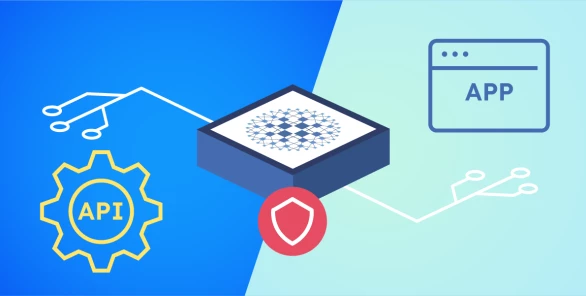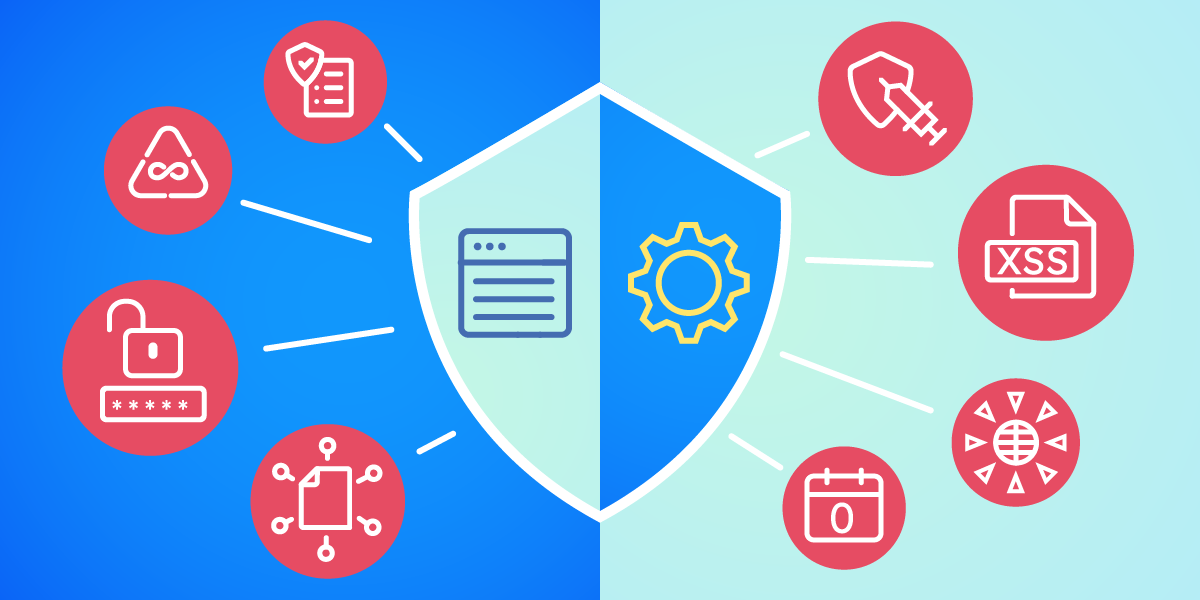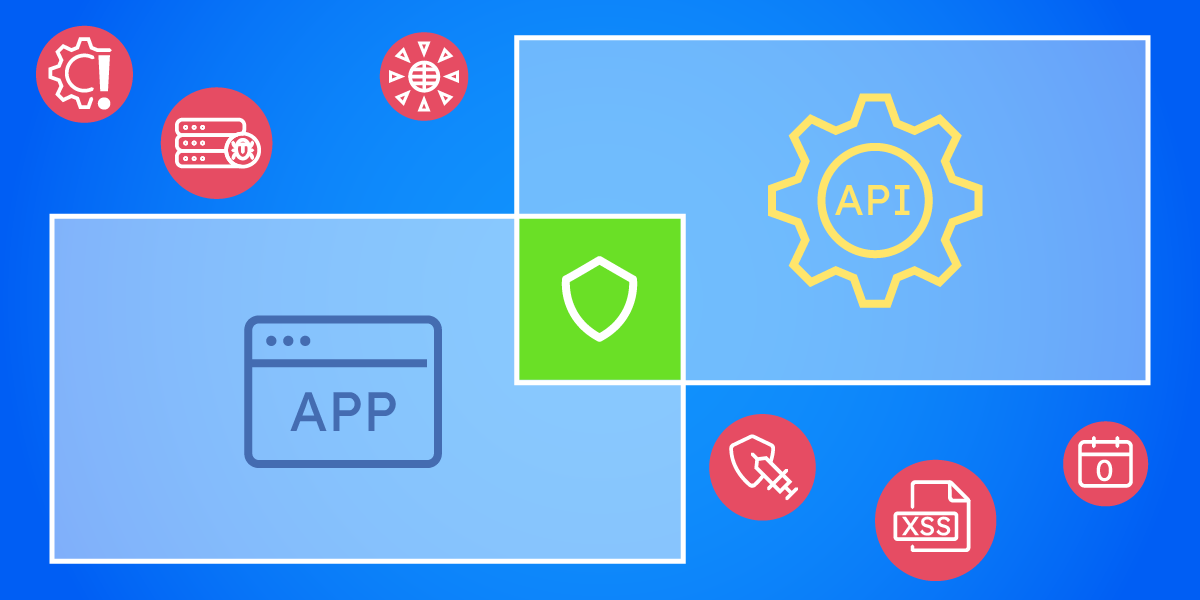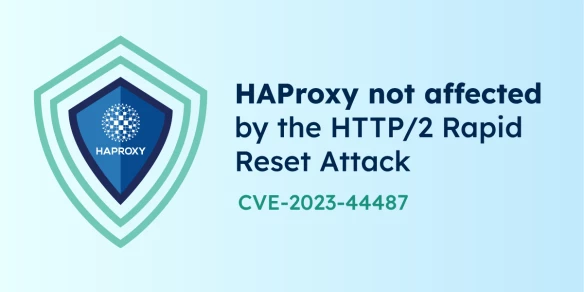
Every day, organizations face external threats as a consequence of exposing their services over the internet. An estimated 2,200+ attacks occur in a 24-hour period—or one attack every 39 seconds. Add the fact that an average data breach (one of many potential consequences of poor security) costs companies $4.45 million, and the need for strong security is impossible to ignore.
Web application and API security is key to protecting your infrastructure, data, and users. Plus, bolstering security can increase application performance by maintaining high availability and blocking DoS attempts that would interrupt service.
While there are core differences between web apps and APIs that influence security implementation, a unified security strategy is crucial. In this blog, we'll discuss why both types of security appear different yet are inherently linked given evolving best practices. Unified approaches remain the most effective.
Why do web application security and API security look different?
At first glance, the overlap between web application and API security might not seem clear. Differences in clients, vulnerabilities, and OWASP categorization obscure the similarities.
Differences in clients
First comes the differences in clients. Developers design web applications for humans first—frontend interactions are prioritized as part of the user experience. Conversely, APIs let two software components communicate with each other using requests and responses. These interactions occur on the backend, and while API calls often stem from user actions, creators design APIs for computer consumption.
Differences in vulnerabilities

Common web app vulnerabilities
Web application security involves protecting websites, applications, and any associated APIs from various threats. These risks multiply as your application scales and endpoints are added.
The threat landscape is quite vast for web apps. It's also always evolving as technology changes and attackers find new exploits. It's the responsibility of developers, security teams, organizations, and their vendors to proactively counteract these threats. Here are some of the major security threats that web apps currently face:
DDoS and DoS attacks are some of the most common attacks today, and work by interrupting or overwhelming the resources supporting online services. DDoS attacks leverage a distributed network of devices that impact their targets by overloading server CPUs, consuming all available memory, or consuming all available bandwidth via excessive payloads. DoS attacks can achieve similar results but typically originate from a single source.
Cross-site scripting (XSS) attacks work by injecting malicious client-side scripts into trusted webpages. Typically JavaScript snippets, scripts can also include HTML code or any other frontend executable code. Web browsers mistake altered scripts as trusted and legitimate. XSS attacks are especially dangerous since they can access session tokens, cookies, and other sensitive information.
SQL injection attacks use malicious SQL queries to impact databases. Attackers can read sensitive information from the database, alter information, and even delete it.
Zero-day vulnerabilities, until disclosed, are unknown to developers of impacted web applications and potentially very serious. Fixes aren't immediately available. These threats have sparked the emergence of Google's Project Zero and other cybersecurity watchdogs who help uncover critical application vulnerabilities.
Misconfigurations often sneak into production—either through a lack of hardening, component mismanagement, unoptimized security settings, poor error handling, and more.
Server-side request forgery (SSRF) attacks abuse server functionality to read or modify internal resources. Attackers can either use their own URLs or alter existing URLs the server-side code fetches or updates. This gives them privileged access to private networks, configurations, hidden databases, or the ability to send requests to internal services.
Common API vulnerabilities
API attack surfaces tend to be large. This is because APIs are accessible to a wide range of client devices, and therefore have more endpoints. API data also comes from a variety of sources, which makes validation that much more important in catching malicious code and preventing third-party abuse. Here are some of the major security threats that APIs face:
API abuse describes any malicious or accidental API usage that compromises sensitive systems, scrapes data, or overwhelms applications through request spam. In turn, bots can launch DDoS attacks and account takeovers en masse using stolen information. Abuse also occurs when friendly services (or API consumers) poll API servers too frequently and request excessive payloads.
Broken authentication describes any situation where the client identity verification process is faulty or compromised. For example, HTTP authentication, API key authentication, or OAuth authentication measures may not be working properly—enabling unrestricted access or privilege escalation within internal systems.
Broken authorization takes many forms, occurring at the object, object property, and function levels. Attackers can exploit vulnerable endpoints to make unauthorized calls (often to internal administrative APIs), manipulate objects, leak data, and destroy data via permissions escalations.
Unrestricted resource consumption easily and often results from DoS attacks, which in turn raises operational costs. CPU consumption, memory usage, bandwidth use, and storage needs are vital API performance indicators. When a server is maxing out its resources, this can be indicative of poor provisioning, flawed API design, or a security vulnerability.
OWASP tracks vulnerabilities differently
The OWASP Foundation has worked collaboratively with industry professionals to promote secure coding and identify threats for over 20 years. The Foundation releases an updated OWASP Top 10 critical security risks list every three or four years.
Traditionally, these lists have focused on web application security. However, the explosive popularity of APIs has necessitated the creation of a separate Top 10 API Security Risks. The OWASP Foundation has recognized that while overlap does exist, API developers must account for unique vulnerabilities.
Perceptions of frontend vs. backend
We use the term "web apps" to describe any static or dynamic software running on a server that's rendered within a web browser. Many websites are also considered web apps at their core, as there are many dynamic and interactive components that exist on those websites. Accordingly, web apps rely on client-side code and server-side code that executes on load and in response to user inputs.
While a web app's frontend components form an interactive interface (and are therefore top of mind), web app security conversations should always focus on backend security. This is where security teams do the majority of their work.
Meanwhile, APIs let two software components communicate with each other using requests and responses. Each leverages specific protocols that determine data transfers over the network to enable this. Plus, APIs mainly handle east-to-west traffic, which describes traffic flowing between backend services.
This contrasts with web applications that normally handle north-to-south traffic—or client-server communication flowing in and out of a network. Backend security is therefore paramount for APIs as there's no frontend component.
However, these perceptions are potentially risky and undermine the inherent links between modern web app and API security. Let's explore these similarities and why they're so important.
Why we should think of web app security and API security in the same way

The need for strong security and hardening are the same for web apps and APIs. Companies want to avoid the downtime, data leaks, financial costs, and reputational damage that result from major security incidents. They also want to protect internal systems against intentional or accidental abuse.
Why the urgency? Fifty-eight percent of respondents from Traceable's 2023 State of API Security Report stated that APIs extend attack surfaces across every layer of their tech stacks. Given the increasing dependence of web apps on APIs, these protections are essential. Teams need to limit consumption, abuse, and stop intrusion attempts in their tracks before attacks become impactful.
Principles
As a result, security principles are similar. Teams want to protect critical backend computing resources like available CPU cores and memory—or networking capacity like available bandwidth. Then comes the actual data behind every web application and API, which sits (ideally) within a safely guarded database governed by role-based access control (RBAC) and other restrictions.
Organizational structures
Beyond that, the same team often works on both the web app backend and the API, since these two components are so deeply intertwined. Both web app security and API security are almost always backend-focused. This is a reflection of modern microservices application architectures, which tightly couple web app frontends with backend APIs. These can't be separated. Consequently, it's only logical to follow a more unified approach to security.
Vendor solutions
And vendors are evolving accordingly. It's becoming increasingly common to offer packaged solutions that bolster security on web app and API backends. This strategy also replaces piecemeal security approaches that can otherwise form silos and further increase complexity.
How to provide unified security for web applications and APIs
Unified strategies
Best practices now dictate that a unified strategy for a web application and API security is essential. The following strategies apply to both web apps and APIs:
Secure application architecture – Design your applications and APIs to negate threats tailored to their environments or use cases. This can include network isolation, identity and access management, and any other principles promoting security fundamentals.
Coding best practices – Write your code to be readable, concise, efficient, documented, testable, and as vulnerability-free as possible. Principles like input validation, sanitization, secure data transmission, regular patching, and least privilege are key. So too are authentication and authorization. OWASP maintains its referential Authentication Cheat Sheet, while the OpenAPI Specification is a great starting point for API developers.
Shift-left security – Start testing for bugs and vulnerabilities as early as possible in the software development lifecycle before they can reach production. This shortens the QA process while cutting costs, since production bugs are six times more expensive to fix than those in the design phase.
Threat intelligence – Incorporate systems and solutions that collect and analyze usage data. This helps teams understand a threatening actor's motives, targets, and behaviors.
Traffic routing, monitoring, and filtering – Implement a load balancer and API gateway to effectively distribute client traffic to available servers, avoiding overloads. Detect anomalous behaviors and suspicious requests and block them in conjunction with ACLs.
Incident response – When a problem (breach, slowdown, outage) occurs, take quick steps to identify the source and implement fixes that cause minimal disruptions. Leverage automation tools and AI to determine the best remediation procedures.
Unified reporting and responsibility
Development, security, and operations (DevSecOps) teams have overlapping goals and responsibilities when it comes to security, but unfortunately, many companies treat them as separate entities. These teams absolutely must be on the same page to succeed in their security mission. The following tenets hold true:
Avoid silos – Teams need to communicate and share the responsibility of security for web apps and APIs. Don't let one business unit shoulder the burden of security, and welcome ideas and solutions that encourage collaboration. This requires cultural buy-in.
Avoid fragmented data and systems – Centralization is key to keeping DevSecOps teams informed and unified in their approach. Usage metrics, threat intelligence data, and more should be shared and easily accessible from one location. Internal systems should be shared, barring relevant access restrictions, and user-friendly.
Avoid blame shifting – While many organizations focus on the "who" in a security incident, focusing on preventing future issues via a systematic approach is time better spent. An internal audit should be done to uncover infrastructure or policy weaknesses and address them.
Unified security solutions
Why piece together a patchwork suite of security products when one will suffice? An ideal security solution should be chock full of features that counteract the top threats facing web apps and APIs. These features include the following:
DDoS protection – Prevent globally-coordinated attacks, botnets, and traffic spikes from sapping CPU, memory, and bandwidth. Preventing downtime is crucial to maintaining high availability.
Bot management – Lock out harmful non-human traffic and prevent abuse, while still allowing beneficial crawlers such as Googlebot and Bingbot. Use behavioral indicators, weighting, and scoring to identify bad traffic before it reaches backend servers.
Rate limiting – Control how often a client can make API calls, and at what volumes, to prevent purposeful or accidental abuse. This prevents users from exhausting system resources through mechanisms such as DoS attacks. Web apps can also throttle user activity and limit request frequency, to combat bots and deter malicious behavior.
Web application firewall (WAF) – Harness an intermediate layer of security that protects web apps and APIs against cross-site scripting, SQL injection attacks, and requests with malicious payloads. Set customizable rules to allow only approved traffic through to your servers.
Observability – Wherever possible, leverage a “single pane of glass” that allows you to monitor and manage your entire infrastructure. Black box solutions leave you operating in the dark. Observability lets you make decisions based on real-time data and performance indicators.
HAProxy provides unified security for applications and APIs
HAProxy has your security needs covered in any deployment environment—whether you're running complex web applications or high-volume APIs (or both, in all likelihood!). As a high-performance software load balancer, reverse proxy, and API gateway, HAProxy Enterprise uses a consistent set of rules and interfaces and a multi-layered approach to distribute good traffic to available servers while blocking bad traffic from getting through.
HAProxy Enterprise includes a high-performance WAF, DDoS protection, bot management, rate limiting, and other features that address common security needs for web apps and APIs.
Our unified security approach also brings teams together. HAProxy Fusion Control Plane gives DevSecOps teams one home to operate within. Teams can manage their web app and API security policies, and their distributed load balancer and WAF layer, from a single graphical interface. They can also integrate the HAProxy Fusion API with their automation and security information and event management (SIEM) systems.
Want to learn more about HAProxy security solutions? Check out our dedicated solution page, or dive deeper with our Multi-Layered Security Webinar.
Subscribe to our blog. Get the latest release updates, tutorials, and deep-dives from HAProxy experts.




